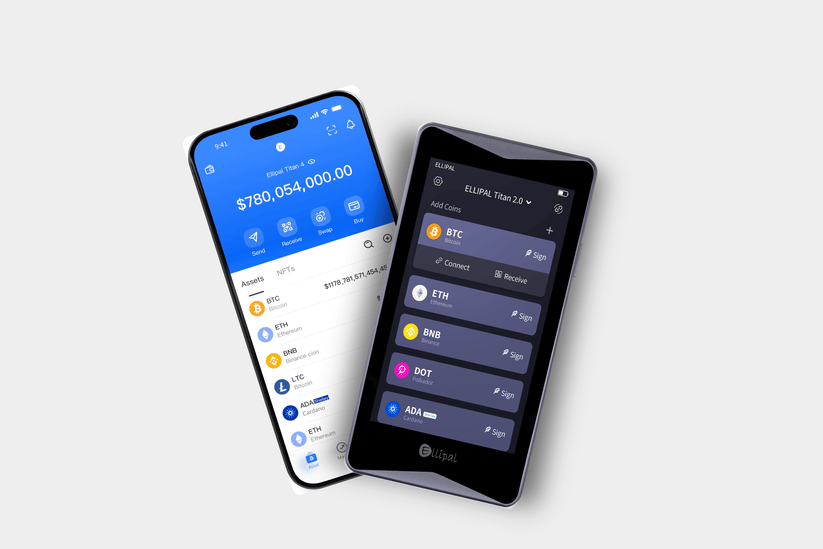Unlock the Secret to Finding the Perfect Cold Wallet at Unbeatable Prices!
In the rapidly evolving world of cryptocurrency, securing your digital assets is paramount. This is where cold wallets come into play. Unlike hot wallets, which are connected to the internet and more vulnerable to hacking, cold wallets provide a safe and offline storage solution for your cryptocurrencies. Choosing the right cold wallet is crucial not just for security, but also for convenience in managing your assets. This article aims to guide you through the process of finding the best cold wallets available and help you secure them at the best prices. Whether you’re a seasoned investor or a newcomer to the crypto space, understanding the nuances of cold wallets will empower you to make informed purchasing decisions.

Understanding Cold Wallets
Cold wallets are storage solutions for cryptocurrencies that are not connected to the internet, providing an extra layer of security. They primarily come in two forms: hardware wallets and paper wallets. Hardware wallets are physical devices that securely store your private keys offline, making them less susceptible to hacks. They often come with user-friendly interfaces and backup options that can be easily managed. On the other hand, paper wallets involve printing your private and public keys on paper, which can be stored in a safe place. While they offer a high degree of security, they require careful handling to avoid physical damage or loss. Each type of cold wallet has its own advantages and disadvantages; for instance, hardware wallets are often more expensive but provide a more user-friendly experience, while paper wallets are free and highly secure if managed correctly. Understanding these differences is essential in making the right choice for your cryptocurrency storage needs.
Factors to Consider When Choosing a Cold Wallet
When selecting a cold wallet, several key factors should guide your decision. First and foremost is security features; look for wallets that offer additional layers of protection, such as two-factor authentication and recovery phrases. Compatibility is another crucial factor; ensure your cold wallet supports the specific cryptocurrencies you intend to store. Ease of use is also significant; an intuitive interface can save you time and frustration, especially if you're new to cryptocurrency. Additionally, consider backup options—does the wallet allow you to create secure backups in case of loss or damage? Having a reliable recovery process is essential to safeguard your assets. Lastly, don’t overlook the manufacturer's reputation; a product from a well-known and trusted brand is often worth the investment for peace of mind. My friend recently opted for a new cold wallet and was thrilled with how simple the setup process was, reflecting the importance of user experience.
Comparing Prices and Deals
Finding the best deals on cold wallets requires a strategic approach. Start by comparing prices across various platforms, including official websites, online marketplaces, and reputable tech retailers. Look for seasonal sales or special promotions that may allow you to purchase a high-quality wallet at a reduced rate. Reading customer reviews and product comparisons can also provide insight into the value of a product relative to its price. It’s important to consider not just the initial cost but also the long-term value—some wallets may come with added features or customer support that justify a higher price tag. Personal anecdotes from friends can be invaluable here; one of my friends managed to snag a great deal by waiting for a holiday sale and ended up with a wallet that exceeded her expectations. Being patient and diligent in your search can lead you to incredible savings.
Common Mistakes to Avoid
When it comes to selecting and purchasing cold wallets, there are several common pitfalls to avoid. One major mistake is overlooking security features; always prioritize wallets that offer robust protection. Another common issue is buying from untrustworthy sources; ensure you purchase from reputable retailers or directly from the manufacturer to avoid counterfeit products. Not researching enough can also lead to regret; take the time to read reviews, compare features, and understand the product before making a decision. Lastly, many users forget to consider compatibility with their existing cryptocurrencies, which can lead to frustration down the line. By being aware of these common mistakes, you can navigate the purchase process more smoothly and confidently.
Making an Informed Choice on Cold Wallets
In summary, selecting the right cold wallet is essential for safeguarding your cryptocurrency investments. By understanding the different types of wallets, considering important factors like security and usability, and taking the time to compare prices and avoid common mistakes, you can make an informed decision. The goal is to find a cold wallet that not only fits your budget but also meets your security needs. As you embark on your search, remember to conduct thorough research and take your time exploring the options available. Your digital assets deserve the best protection, so choose wisely!





